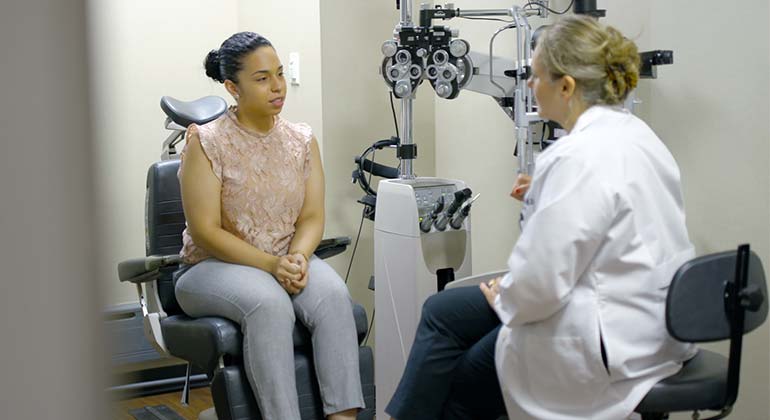The Pros and Cons of Various Refractive Surgical Treatments for Improved Eyecare

LASIK Surgery
LASIK surgical treatment is a generally executed refractive procedure that aims to remedy vision problems such as nearsightedness, astigmatism, and farsightedness. During the procedure, a thin flap is produced on the cornea, and a laser is used to improve the underlying tissue, fixing the refractive error.
One of the primary benefits of LASIK surgery is the fast enhancement in vision experienced by numerous people. It is important for people thinking about LASIK surgical procedure to undertake a complete examination by an eye care professional to determine if they are appropriate prospects for the treatment.
PRK Procedure
The PRK procedure, additionally recognized as Photorefractive Keratectomy, is a kind of refractive surgical procedure that aims to fix vision issues comparable to LASIK surgery. Unlike LASIK, which entails creating a flap in the cornea, PRK functions on the surface area layer of the cornea.
One of the benefits of PRK over LASIK is that it removes the risk of flap-related complications considering that no flap is produced during the surgery. This can be useful for people with slim corneas or those associated with contact sports where eye trauma is a possibility. The recovery time for PRK is typically much longer contrasted to LASIK, as the external layer of the cornea needs time to regenerate after the treatment. Despite the longer healing period, PRK can be an ideal alternative for individuals seeking vision correction surgical treatment.
SMILE Surgical Procedure
A sophisticated refractive surgery strategy obtaining popularity in the field of ophthalmology is SMILE Surgical procedure. Small Cut Lenticule Removal (SMILE) is a minimally invasive treatment that deals with vision by improving the cornea utilizing a femtosecond laser. Unlike conventional LASIK surgical procedure, SMILE Surgery includes developing a little cut in the cornea to extract a lenticule, which leads to less interruption to the corneal structure and potentially faster recovery times.
Among the key benefits of SMILE Surgical procedure is its capacity to treat myopia (nearsightedness) and astigmatism with high accuracy, bring about exceptional visual results for patients. The minimally invasive nature of the treatment also minimizes the danger of difficulties such as completely dry eye disorder, making it a beneficial choice for individuals looking for refractive surgical procedure.

LASEK Technique
Having discovered the advantages and considerations of SMILE Surgery, an additional noteworthy refractive surgery method worth examining is the LASEK Method. LASEK, which represents Laser-Assisted Subepithelial Keratectomy, is a type of laser eye surgical procedure that intends to fix refractive mistakes such as nearsightedness (nearsightedness), hyperopia (farsightedness), and astigmatism.
Unlike LASIK, LASEK does not entail producing a corneal flap. Instead, during a LASEK procedure, the surgeon makes use of a watered down alcohol solution to loosen up the slim external layer of the cornea, known as the epithelium.
Among the key benefits of LASEK is that it can be ideal for people with thin corneas who may not be excellent prospects for LASIK. Additionally, LASEK commonly results in minimal post-operative discomfort and a quicker recuperation time compared to get redirected here PRK. Nonetheless, the aesthetic recovery process with LASEK might be a little longer than with LASIK.
Implantable Get In Touch With Lenses
Implantable Get in touch with Lenses use a long-lasting vision modification remedy for individuals looking for a choice to conventional call lenses or glasses. These lenses, likewise understood as phakic intraocular lenses, are surgically inserted into the eye to deal with refractive mistakes such as myopia (nearsightedness), hyperopia (farsightedness), and astigmatism. eye doctors in andalusia. Unlike standard contact lenses that rest on the surface area of the eye, implantable get in touch with lenses function within the eye itself, giving clear vision without the need for day-to-day maintenance or removal
Among the crucial advantages of implantable contact lenses is their durability. As soon as put, they can stay in the eye indefinitely, offering constant and steady vision improvement. Furthermore, these lenses can click here to find out more be a superb alternative for people who are bad candidates for laser eye surgical treatment or who like a reversible vision improvement procedure.
However, implantable contact lenses do bring some dangers, consisting of the possibility for cataracts or increased eye pressure. It is vital for individuals considering this choice to seek advice from with an eye care professional to identify if implantable contact lenses are the appropriate choice for their certain requirements and eye health and wellness.
Final Thought
In verdict, each type of refractive surgical procedure has its very own benefits and drawbacks. LASIK surgery is preferred for its fast recovery time, while PRK treatment might be appropriate for people with thin corneas. SMILE surgical procedure provides very little pain throughout the procedure, yet LASEK method might have a longer recovery procedure. Implantable contact lenses offer an option for those that are not suitable candidates for traditional surgeries. Clients ought to speak with their eye care company to determine the very best choice for their specific needs.

On The Whole, SMILE Surgical treatment presents an appealing choice for people looking to improve their vision via refractive surgery.